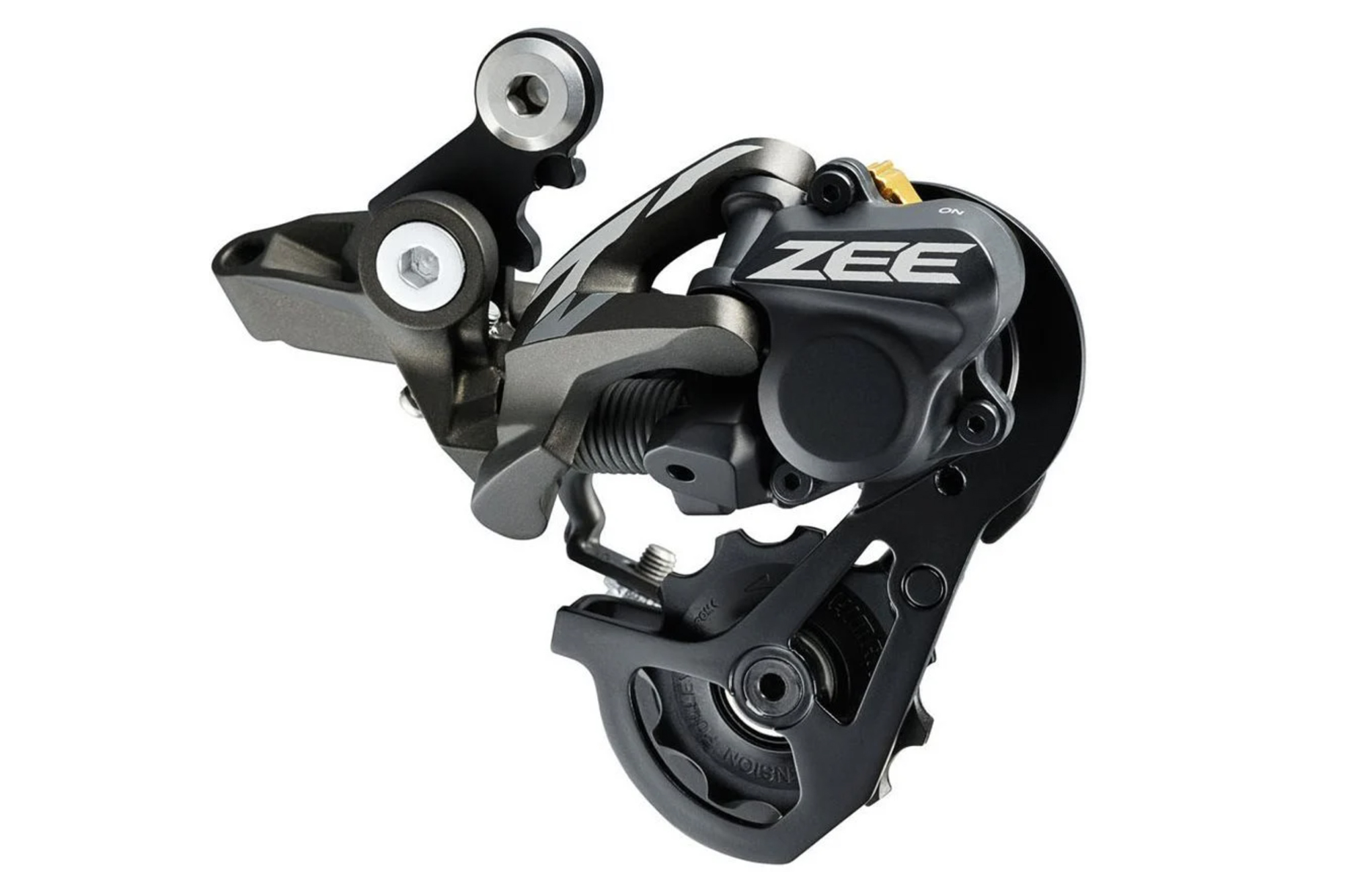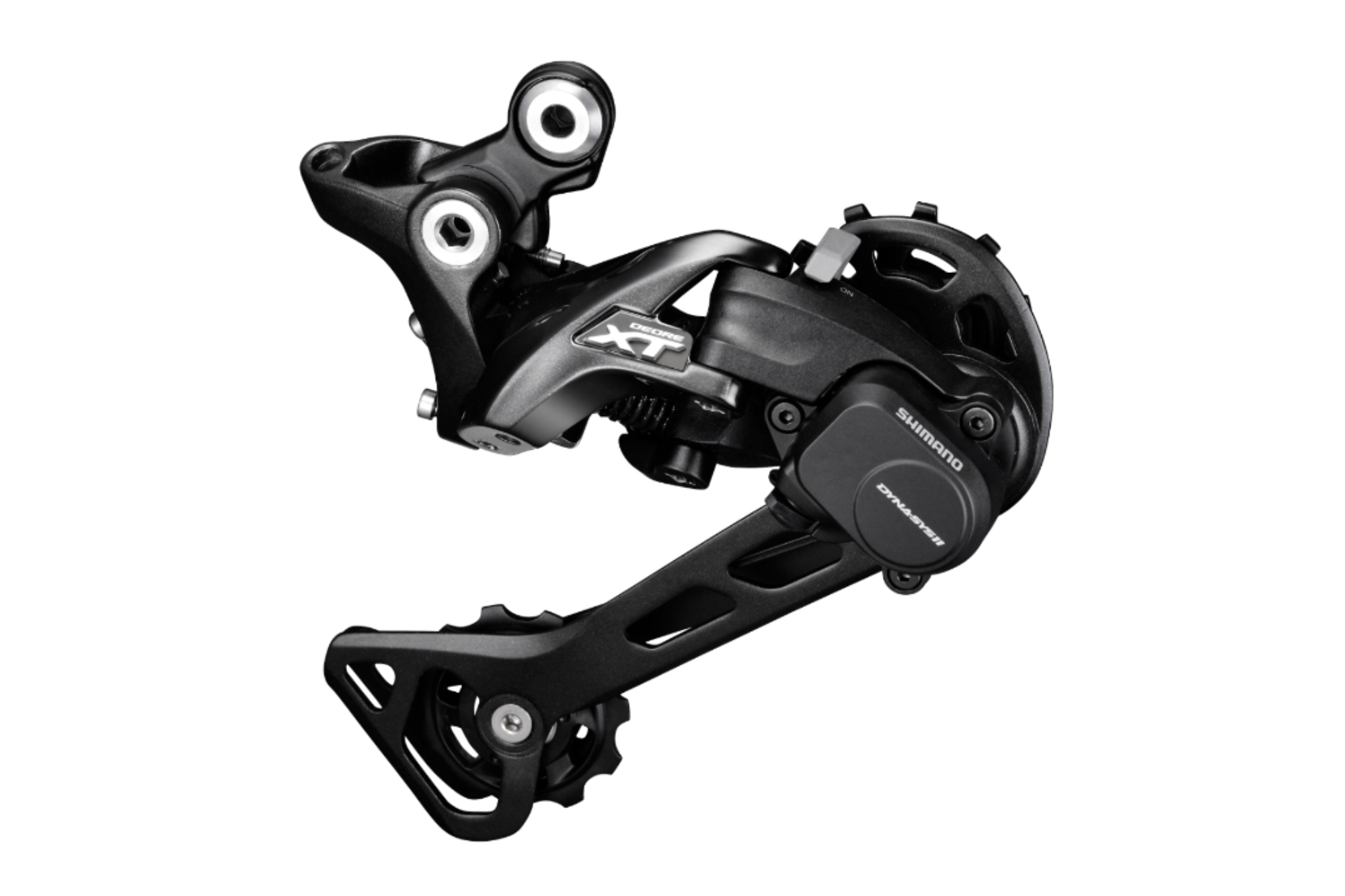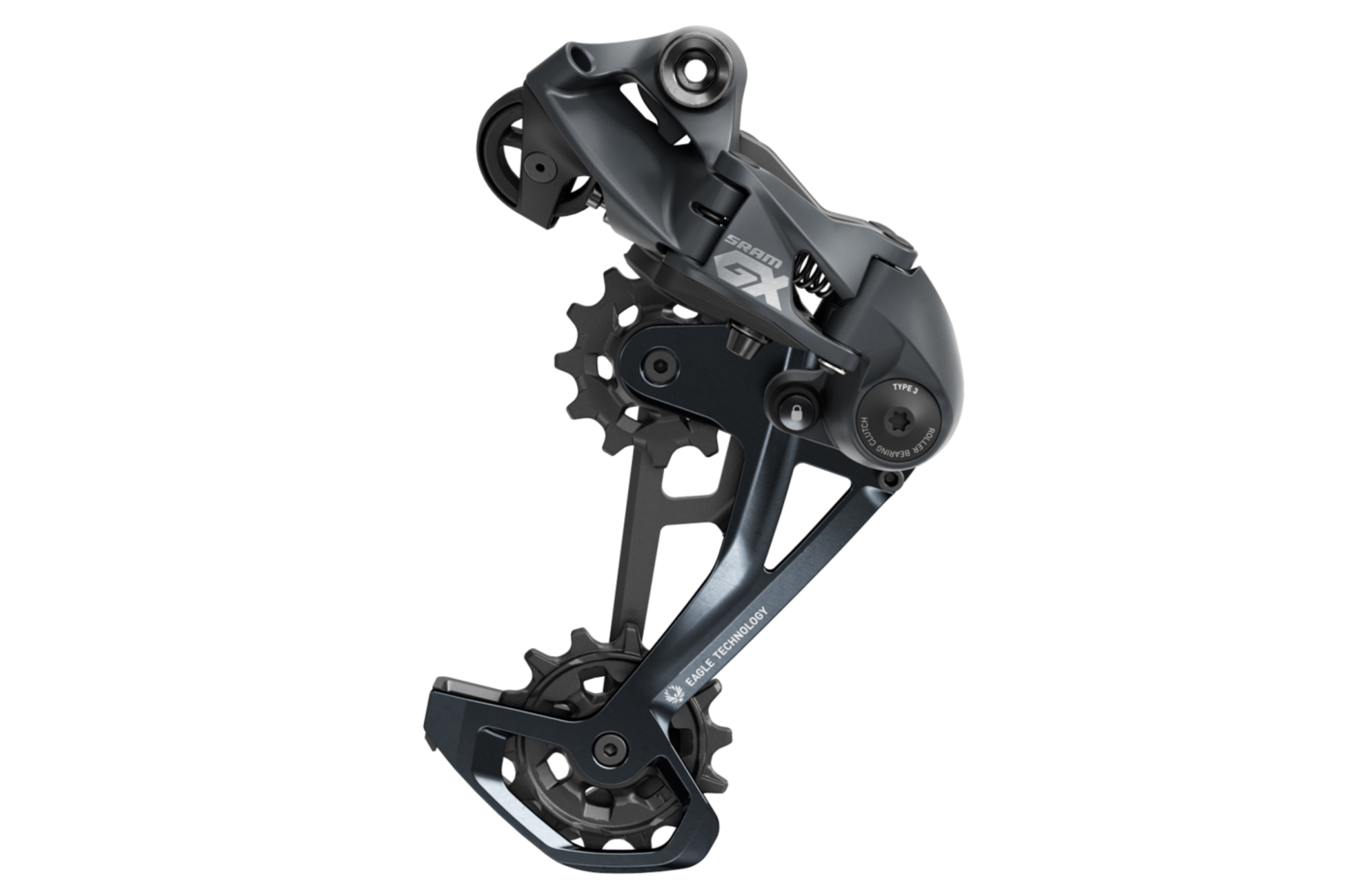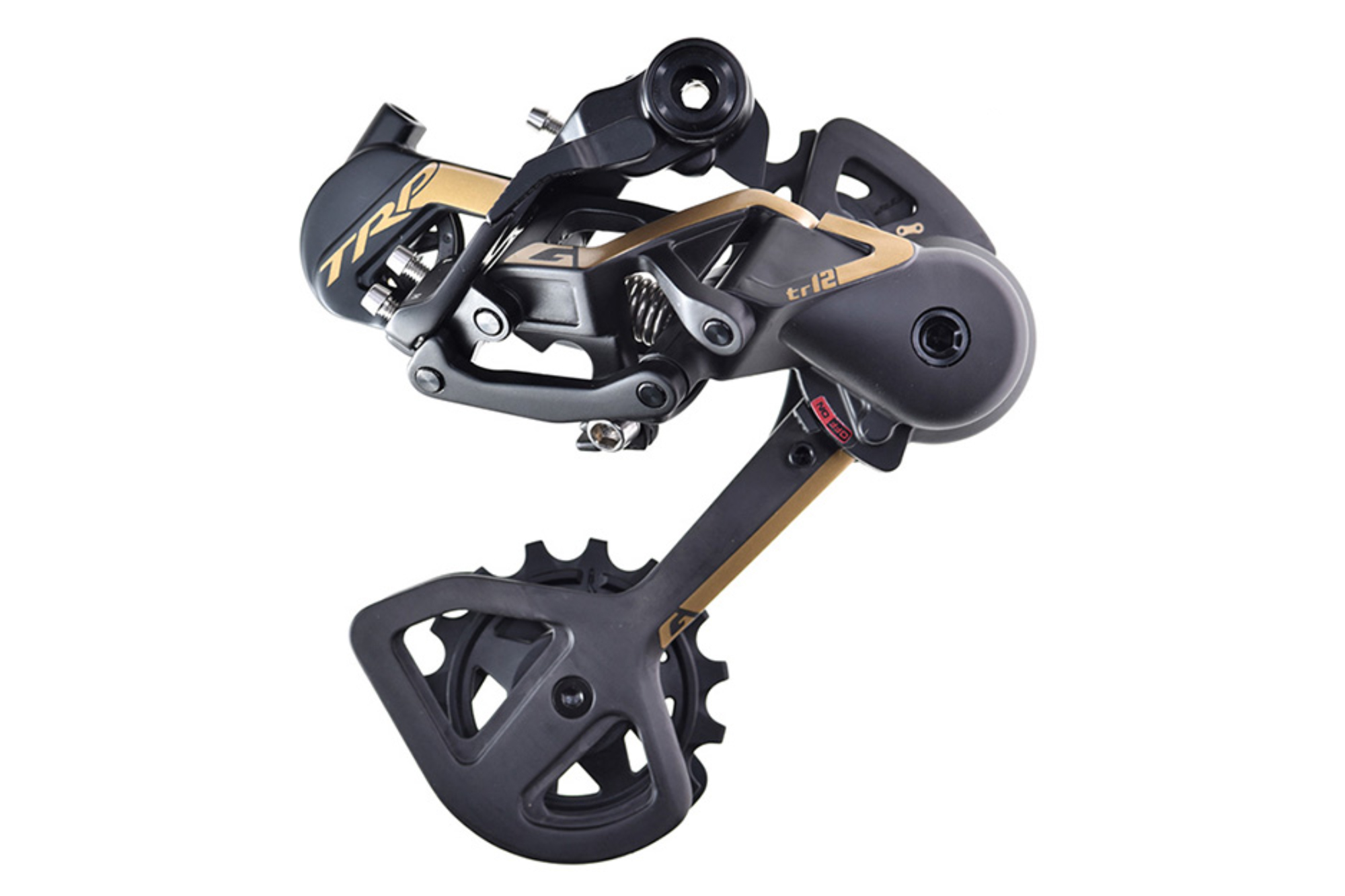Best mountain bike derailleur: Shift gears with ease and efficiency
Our pick of the best mountain bike derailleurs to get you moving no matter how rough the terrain

The best mountain bike derailleur helps you shift quickly, efficiently and silently. It may seem like a small thing, but the humble derailleur is one of the most important attributes of your mountain bike, as it's responsible for moving between gears so you can tackle whatever gradients you come across.
As long it's in good working order, the right derailleur will let you climb bigger hills and ride for longer. This comes down to choosing the correct gearing, which is an area where the best mountain bike derailleurs play a pivotal role.
Besides switching to one of the best MTB groupsets, getting a great derailleur is one of the best mountain bike upgrades you can make. Not only will a new mountain bike derailleur allow you to run a bigger cassette to improve your gear ratios, but contemporary options also promote smoother and better shifting, while keeping the chain from dropping on technical terrain.
With all of these considerations in mind, Bike Perfect has compiled a list of the best mountain bike derailleurs currently available. Unsure what to look for? Well, we've got the info you need to pick the right derailleur below.
- best mountain bike brakes: Our pick of the best MTB brakes
- Best mountain bike disc brake rotors: replacement rotors for better braking
Best mountain bike derailleurs
Why trust BikePerfect

Shimano Zee Freeride
Specifications
Reasons to buy
Reasons to avoid
If you have a Shimano 10-speed drivetrain, the Zee derailleur is an excellent balance of price and performance. It lacks the mode converter available on the more expensive Saint derailleur, but you still get capacity for a max 36T cassette, granted it comes in free-ride spec. Pair that with the right front chainring and you've got plenty of gearing for steep climbs.
Or, if downhill is your thing, then the DH spec works with close-ratio cassettes for more exact gearing. Either way, you still get the Shimano clutch technology, referred to as Shadow, that keeps chain bounce to a minimum for better chain retention.

MicroSHIFT XCD
Specifications
Reasons to buy
Reasons to avoid
Microshift makes Shimano-compatible components and this is its top-of-the-line option. The XCD is a medium-cage derailleur that can handle up to a 46T cassette. That means compared to XTR, you have an additional four teeth of capacity, but it does come with a 102g weight penalty.
There's also a ratchet-and-pawl clutch system on board for better chain retention. If you are looking for high-end shifting for less money, the Microshift is an option for a Shimano-equipped bike.

Shimano Deore XT Long Cage
Specifications
Reasons to buy
Reasons to avoid
For those who are familiar with Shimano drivetrains, it's understood that XT represents the best value. This is similar on the road side with Ultegra. Moving up to XTR gets you different materials and lots of weight savings but the functionality remains mostly the same with XT, despite a drastic price difference.
In the derailleur, one noticeable difference is that below the XT level, adjusting the clutch tension requires full removal of the cover. XT and XTR feature a rubber-covered adjuster that only needs a hex wrench to manipulate clutch tension. The Shimano Deore XT derailleur adds 44g of weight when compared with the XTR equivalent but with a cost saving of around $120, it's not a deal-breaker.

Sunrace MZ900
Specifications
Reasons to buy
Reasons to avoid
Sunrace is an affordable leftfield rival to Shimano and SRAM and will often offer solutions its rivals can't match. The brand has been around since the early '70s and has garnered a reputation for manufacturing quality components that go the distance.
The Sunrace MZ is a Shimano-compatible 12-speed groupset, with the biggest advantage being its use of the older HG hub standard (this means there's no need to upgrade your wheels if you want to go to 12-speed). Comprising part of that groupset is the MZ900 rear derailleur. It's around $50 cheaper than the Shimano XTR version and is garnished in carbon fiber.

SRAM GX Eagle
Specifications
Reasons to buy
Reasons to avoid
Value-based mountain bikes with good quality drivetrains often come with a SRAM SX groupset. It's the entry into the 12-speed SRAM ecosystem but the derailleur lacks the stronger construction found higher up in the product line. The cassette also uses the older Shimano HG-style of freehub body. For those reasons, you might be looking to upgrade and, if that's the case, the GX Eagle is an excellent option.
You get a more robust construction and an increase of max cassette size from 50 teeth up to 52T. Running a 52T cassette requires the use of an XD freehub, but you can always stick with your current 50T HG freehub then upgrade at a later date.

SRAM XX1 Eagle AXS
Specifications
Reasons to buy
Reasons to avoid
The beauty of the SRAM AXS groupset ecosystem is that everything is cross-compatible and mixable. A gravel bike setup with drop-bar controls can add the XX1 Eagle AXS derailleur or the heavier and more durable X01 Eagle counterpart, to get that huge 520 per cent gear range of the 52-tooth cassette.
If you later move to a flat bar bike, just replace the controls. If you use SRAM Eagle but the mechanical version, the AXS upgrade kit represents an affordable entry point into electronic and wireless shifting.

TRP TR12
Specifications
Reasons to buy
Reasons to avoid
SRAM and Shimano both offer incredible derailleur options but TRP, known primarily for its brakes, has another option. The Hall got its name through its inventor, John Hall. Hall is the head mechanic for pro downhill mountain biker Aaron Gwin. Gwin hates a noisy drivetrain and Hall found that much of the noise from other derailleur designs were coming from movement at the B knuckle.
Hall designed a lock to limit movement in the area and TRP has integrated it into its TR12 rear derailleur. Along with the Hall Lock, you get plenty of carbon fiber, three color options, a ratchet clutch and compatibility with 50T SRAM or Shimano cassettes.
- Best MTB handlebars: the best mountain bike handlebars we've tested
- Best MTB grips: the best mountain bike grips available for all disciplines
- Best mountain bike stems: the best stems to sharpen up your steering
What you need to know about mountain bike derailleurs
1. You can’t mix and match
Before we get into this, it's important to understand that there are a lot of workarounds available from small companies. Some of them work great, others not so much. Generally, the problem is that if you try to do something outside the norm it becomes a hassle over time. Consider it a situational fix, and only go that direction if there’s a very compelling reason. So, with that in mind let's talk about how mixing and matching doesn't work.
Your shifters are your guide. If you have SRAM shifters, you can't pick up a Shimano derailleur and expect it to work. If it's electronic, the systems are completely different. If it's cable-actuated, the pull ratios are different. Whatever system your bike has right now, that's what you are looking for.
There are two caveats to that statement. There are some third-party derailleurs available that are directly compatible with Shimano groupsets. They tend to be less expensive but if you like what you see then it's not a bad option. With direct compatibility, there's no workaround in the mix. If you ever had an issue, you could go back to a part from Shimano and not be left in a lurch.
The other caveat is that you could upgrade the whole system. It starts to open up a whole list of potential compatibility issues but it's possible. Just because your bike came from the store with a specific type of derailleur doesn't mean you can never change. It just means there are a lot more parts, and money, involved.
2. You can’t upgrade the number of gears
In some ways, this is part of the no-mix-and-match discussion, but it's broken out because so many people wish it were different. You can upgrade between generations. If you have an older generation of shifters, you can get a newer generation of derailleur. What you can't do is add gears with a new derailleur. Whatever the number of gears you currently have on your bike, that's what you need from your new derailleur. Of course, you could upgrade to a new groupset and add gears but that's not what you were hoping for!
3. Max Gearing
Often if you are considering a new derailleur for your bike, it's because you want to change your gearing. This might be because you physically can't turn the pedals with enough force to get up the hills you want to climb. When riding off-road, there's another good reason to use easier gearing though and that's traction. Even if you can turn the pedals, the power delivery might be jerky or require standing. In both cases that can lead to a loss of traction. The best traction will come from sitting and delivering a smooth continuous flow of power. That means higher cadence and easier gearing.
Now that you've decided to upgrade your gearing, you've found your derailleur is at the limit of what it will take. That means a new derailleur for your mountain bike and it means figuring out what you need.
Derailleurs have a choice of cage lengths. For some brands, there isn't actually a choice available. That only means that someone has already made the choice and the brand is now offering one option. What the cage length refers to is the length of the lower portion holding the two jockey wheels. The longer this section of the derailleur, the more ability there is to take up slack in the chain. Bigger gears, or a bigger differential between the front and the rear, means more chain is necessary. The more chain length you've got, the bigger the cage needs to be to keep it taught.
It might sound like the best option is to just always choose the longest cage available. That would give you more options for gearing but it also makes the derailleur more vulnerable. A larger cage hangs down closer to the ground. A larger derailleur is also heavier.
With all that in mind, there are two things to understand when choosing the size. The easier one to figure out is the max cassette size. This is a number that the manufacturer lists and there's nothing to figure out. Is that number big enough for what you want to do?
The second piece of information you need is what the capacity of your drivetrain is. To figure this out you take the front chainring sizes and subtract them, then do the same for the rear, and finally, add the two numbers. So, if you have a 36/26T front chainring and an 11-36T rear cassette that would leave you with a 35T drivetrain capacity. Another example would be a 30T front with a 10-51T rear and that would be a 41T capacity. Just make sure whatever derailleur you choose has more than that number listed in the specs.
Josh Ross was our US tech writer. He's most happy when talking about the finer details of how bicycle parts and components work, and enjoys putting his thoughts to words. He is a road cyclist at heart but can often be found taking the gravel road less traveled. Although he rarely races these days, he still enjoys a good Zwift session and race but will always choose the real world over pixels.
Height: 5'9"
Weight: 137 lb.

